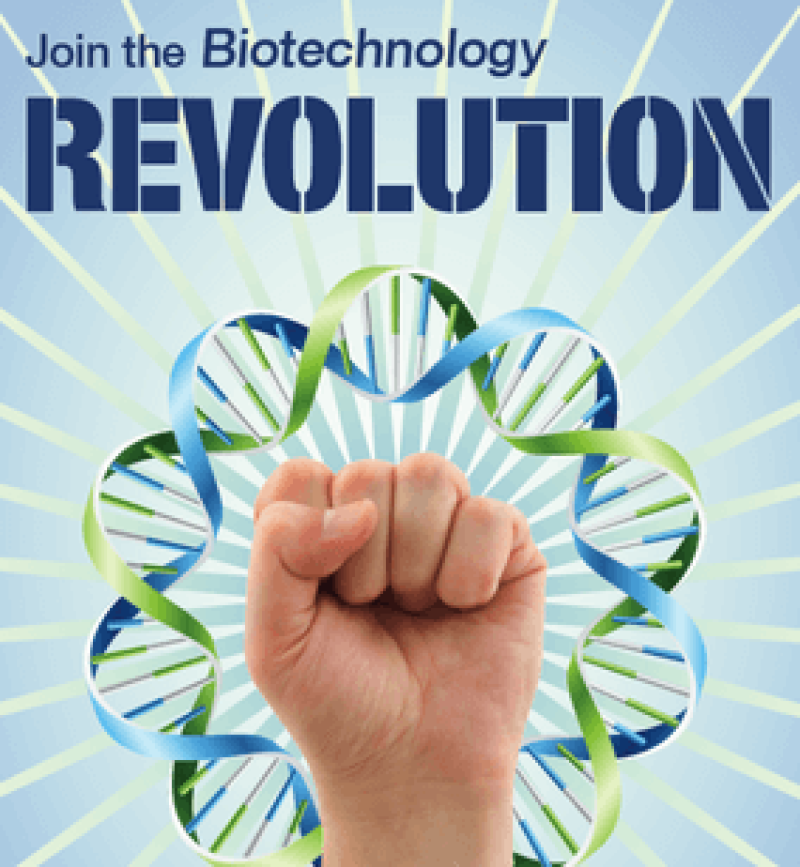Want to track which breed of a certain plant attracts the most ladybugs in your home garden? Interested in engineering your own coffee? How about testing your genome yourself instead of sending samples to 23andMe where your results might get onto the internet? Or how about growing a plant that’s genetically modified to pump out raw plastic for use in your home 3D printer to make, well, whatever you want?
In a fascinating lecture for TEDxDublin, Cathal Garvey, Scientific Director of IndieBio EU, saidthat all of these things should be possible soon, and his prediction makes a lot of sense.
It’s a new world, Golda
It may alarm some people more than marriage without matchmakers alarmed the Tevye, the lead character in Fiddler on the Roof, but Tevye got over it soon enough, even realized its benefits, and the same will happen between society and biotechnology. Introduction of home computers in the late 1970s followed an era in which computers were immense, monstrous, noisy devices that filled large rooms and crossed the minds of ordinary people only if they were part of a TV show plot.
Today, school children as early as kindergarten get “technology” training focussed on various computer devices and apps, because they’re so integral to life. That’s true, regardless of one’s career, but in the near future, technology for the masses could also include aspects of biotech that currently are limited to the realm of academic, medical, and corporate laboratories. Just as people today must be computer literate and keep up with the latest app, the near future may require genetic literacy too, so that every one can keep up with the latest genetic app.
Though its effects are to improve our lives, society is scared of biotech. Particularly in the area of agriculture, public fear comes from campaigns of a planet-wide anti-GMO movement, which opposes genetic modification, because of the enormous profits made by biotech corporations in connection with proprietary rights over the genes and GM products. The proprietary issues are immensely complex and surely we’re in for an era of intense debate and shifting policies.
However that patent battle plays out, though, the mere fact that molecular genetics procedures like DNA sequencing, gene splicing, and even synthetic biology (designing new genes) are getting so rapid, cheap, and automated means that sooner or later molecular biology kits will be available at your local pharmacy or garden shop, or on-line. Years ago, if you wanted to equip a certain organism with a certain gene that it lacked–the human insulin gene, for instance, which now enables bacteria to pump out insulin for treatment of millions of diabetics–you had to obtain the gene physically from someone you knew who would ship it to your lab, frozen.
But today, there’s artificial gene synthesis. For a gene that exists in some organism, you can download its sequence, or you can do synthetic biology and create a new gene by writing up a novel DNA sequence. Then, you can either order up the gene — email the sequence to a company, which then synthesizes the gene for you and mails it — or you can have your own DNA synthesizer (used ones are available for under $10,000) and print out the gene yourself and do what you want with it.
Plastic for your 3-D printer
One particularly intriguing home application for biotechnology that Garvey mentioned is genetic modification of a houseplant to synthesize polylactic acid, which is a biodegradable plastic. It’s friendly to the environment, both because it’s biodegradable and because it can substitute for the kind of plastic that’s made by industry from petroleum that must be drilled from the ground. After creating your genetically modified plastic maker, you could take that environmentally friendly plastic and feed it into a 3D printer, which more and more homes will probably have as the prices drop in the years to come. As for what you can make in a 3-printer, the answer is pretty much anything.
Coffee is getting very expensive, so there could be advantages to making your own right in your home garden, but coffee doesn’t grow very well in the latitudes where most of us live. Still, doing things locally is the best countermeasure against corporate globalization, so those opposing Starbucks, Monsanto, and other nemeses of Neil Young most adamantly should find this idea appealing.
People don’t usually like dandelions in their garden, but from their roots you can make a drink that tastes like coffee. It’s even sold in some stores as an herbal coffee that’s caffeine-free. But you might prefer it with caffeine, and if you enjoy gardening there’s a way. Just a few genes inserted into the dandelion genome and now they’ll have the enzymes needed for synthesizing caffeine. Get those genes for about $10 each, put them into the genome of a common dandelion using a gene insertion kit (that within a decade or so will probably be as available as take-home pregnancy tests are today), and voilà — caffeinated dandelion root coffee. It’s grown from scratch in your home garden, even as far north as Boston or Seattle, so there you have it. Soon, you’ll be able stick it fiercely to the Starbucks corporation, and you’ll do it by embracing genetic modification.
David Warmflash is an astrobiologist, physician and science writer. Follow @CosmicEvolution to read what he is saying on Twitter.































